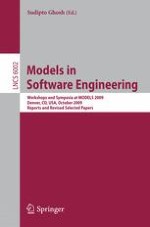2010 | Buch
Models in Software Engineering
Workshops and Symposia at MODELS 2009, Denver, CO, USA, October 4-9, 2009, Reports and Revised Selected Papers
herausgegeben von: Sudipto Ghosh
Verlag: Springer Berlin Heidelberg
Buchreihe : Lecture Notes in Computer Science
